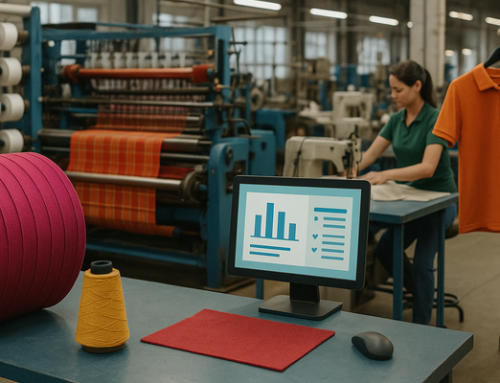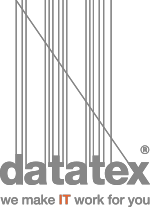Textile and Apparel Market Regional Analysis: Insights and Trends
Compliments! If you are reading this article, you are somehow related to one of the most influential industries on the planet – the Textile Industry.
The global textile market is vast, expected to reach an astounding $3.76 trillion by 2033, growing at a robust 7.4% CAGR from 2024 to 2033. This dynamic market is rapidly evolving, driven by regional trends that present both challenges and opportunities.
Understanding these regional dynamics is crucial for companies aiming to thrive in the global textile market. This deep dive examines key insights and emerging trends across different regions, from the booming Asia-Pacific to the burgeoning markets of Latin America and the Middle East. It also explores how leading companies are leveraging these opportunities.
From its historical roots to cutting-edge innovations, discover how this dynamic sector shapes economies, influences fashion trends, and drives consumer choices worldwide.
Introduction to the Global Textile Industry
As mentioned, the global textile industry is expansive and continuously adapting to global trends, regional shifts, and consumer demands. It plays a pivotal role in the global economy, manufacturing everything from natural fibers to complex fabrics. This diversity underscores the industry’s strength, reinforced by growing demands across clothing, home decor, and industrial applications.
Key Drivers and Restraints
- The increasing urbanization and population growth in developing countries are major drivers behind the rising demand for textiles, particularly in apparel and home textiles.
- Advancements in textile technology, such as innovative fibers and fabrics, are pivotal in driving market growth.
- Environmental regulations and the push for sustainable textiles pose challenges but also foster innovation and new opportunities.
- Fluctuations in raw material prices can significantly impact the profitability of textile manufacturers and suppliers.
Regional Textile Market Landscape
The textile market exhibits unique characteristics in each region, highlighting growth patterns and potential opportunities. This section provides valuable insights for industry stakeholders.
Asia-Pacific
The Asia-Pacific region boasts a formidable manufacturing base, abundant raw materials, and cost-effective production capabilities. Leading countries like China, India, and Vietnam dominate with a diverse range of textiles catering to a massive consumer base.
Europe
Renowned for its history, design excellence, and commitment to sustainability, the European textile market emphasizes eco-friendly practices and technological innovations. Key players such as Germany, Italy, and the UK drive industry standards with a focus on quality and innovation.
North America
The United States and Canada are pivotal in the global textile market, particularly in technical textiles and sustainable production practices.
Latin America
Countries like Brazil, Mexico, and Colombia are emerging as significant players in textile manufacturing, serving both domestic and international markets.
Middle East
Countries such as Turkey, Egypt, and the United Arab Emirates are witnessing increased investments in textile production and trade, positioning the region as a growing textile hub.
Regional Analysis in the Textile and Apparel Market
Examining diverse regions such as the Asia-Pacific and Europe reveals substantial opportunities and challenges for industry players. Let’s delve into the latest developments in these markets.
Asia-Pacific Textile Market Dynamics
The Asia-Pacific region plays a pivotal role in the global textile industry, supported by robust manufacturing capabilities, a vast workforce, and favorable governmental policies. Market players leverage natural fibers like wool and polyester to meet evolving consumer preferences, while also pioneering collaborative efforts and sustainable product innovations.
European Textile Market Outlook
The European market is undergoing significant transformations, driven by consumer demand for natural fibers and sustainable products. Major companies are investing in novel materials and production methods, fostering collaborative initiatives to streamline textile supply chains and enhance market competitiveness.
North America: A Pivotal Textile Hub
Led by the United States, North America remains a cornerstone of the global textile industry, influencing market size and growth dynamics. The region excels in leveraging high-quality raw materials and advanced manufacturing capabilities to cater to diverse local and international market demands.
Latin America and Middle East: Emerging Textile Hotspots
Latin America and the Middle East are rapidly emerging as key players in the global textile market, buoyed by favorable economic policies, expanding manufacturing infrastructures, and a growing emphasis on sustainable and innovative textile solutions.
Raw Material Segmentation: Fiber, Yarn, and Fabric
The textile industry thrives on a diverse array of raw materials that drive its growth trajectory. From natural fibers like cotton and wool to synthetic counterparts such as polyester and nylon, understanding the nuances of these materials is essential.
Natural vs. Synthetic Fibers
Natural fibers like cotton and wool are valued for their durability, comfort, and eco-friendliness, while synthetic fibers such as polyester and nylon offer versatility and affordability. Market dynamics for these fibers are influenced by regional preferences, technological advancements, and evolving consumer trends.
Textile Raw Material Sourcing and Trends
- The global textile market increasingly favors sustainable sourcing practices, driving demand for organic and recycled raw materials.
- Regions like Asia-Pacific and Latin America are pivotal in the production and importation of textile raw materials, leveraging cost advantages and trade agreements.
- Technological innovations in textile manufacturing continue to yield new fibers, yarns, and fabrics that cater to evolving industry demands.
Why is Textile and Clothing ERP software important?
The global textile market exhibits robust resilience, adapting swiftly to evolving consumer preferences and technological advancements. Emphasizing raw materials such as natural and synthetic fibers, the industry remains poised to capitalize on emerging trends and consumer demands. Leading stakeholders are strategically innovating, forging new partnerships, and optimizing supply chains to shape the future trajectory of the global textile market.
In this dynamic landscape, the role of apparel software becomes crucial. ERP for textile industry streamline operations, enhance efficiency, and provide real-time insights into production, inventory, and supply chain management.
By leveraging ERP solutions, textile manufacturers can navigate complexities, reduce costs, and capitalize on market opportunities effectively.
Looking ahead, the textile industry is poised for substantial growth. Industry players must remain agile, embracing technological innovations and leveraging textile ERP solutions to seize opportunities and navigate the industry’s promising future.




